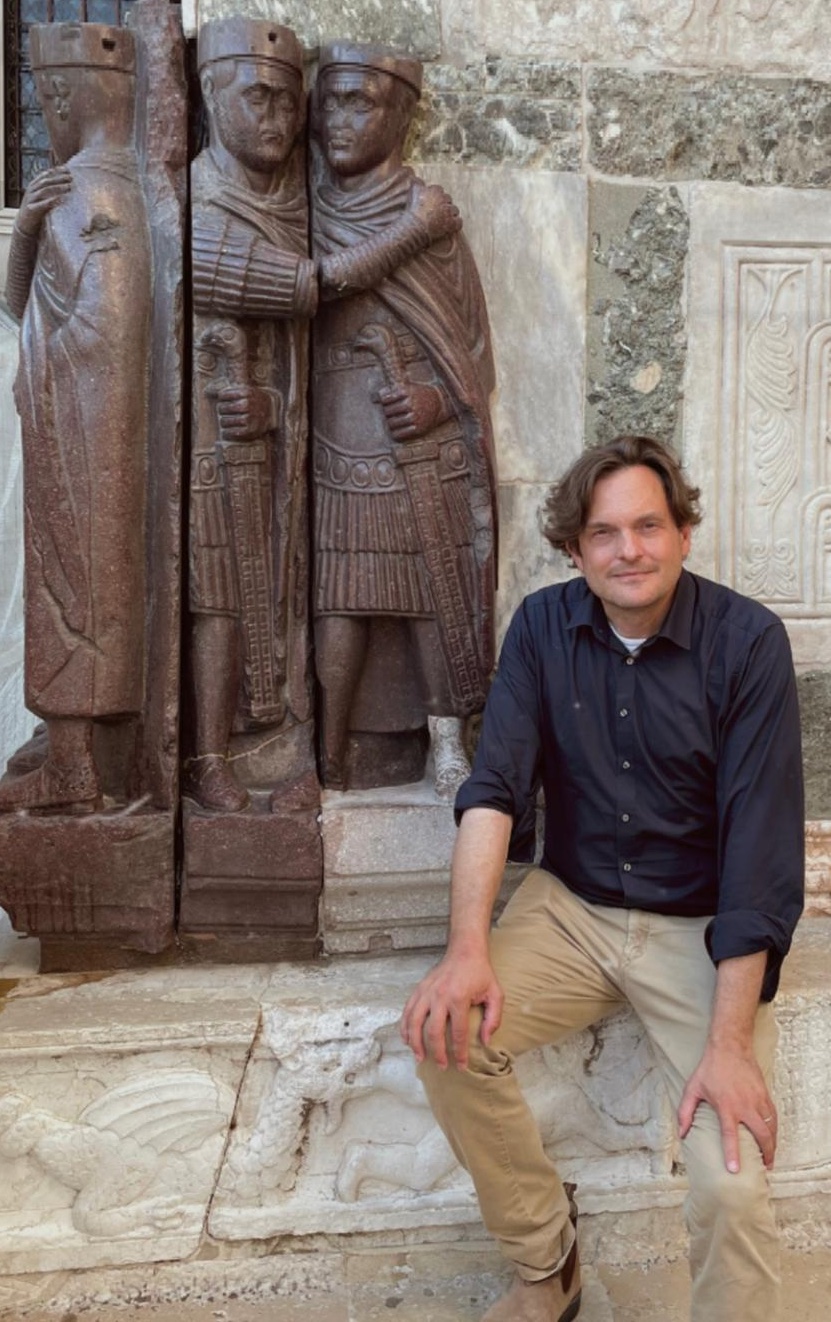
Assoc Prof Mayer’s research is driven by questions of how material evidence can reveal patterns of social, economic and cultural history, and enrich, complement, and contextualise evidence from ancient literature and epigraphy. His scholarly focus is on urban life and visual culture, but he also works on the archaeology of the ancient economy and the role of trade and technology in the Roman Empire. Assoc Prof Mayer is currently writing a book that explores the social and cultural consequences of long distance trade between the Mediterranean and India. In addition, he is working on the use of machine learning in the analysis of ancient coins, and network analysis in regards to Roman trade.
In addition to articles and book chapters, Assoc Prof Mayer has authored two books, which explore how changing patterns of urban life reflect and correspond with patterns of broad cultural and political change. His first book Rom ist dort wo der Kaiser ist (Romano-Germanic Central Museum 2002) explores the role of Rome vis-à-vis the rise of new imperial residences and new political forms in Late Antiquity. His second book The Ancient Middle Classes (Harvard University Press 2012, paperback 2014) discusses the transformation of Roman urbanism from agro-towns to commercial cities and the subsequent rise of broad commercial classes, which found their own forms of cultural expression.
Forthcoming publications:
Profit is Joy. Money Making, Avarice, and Elite Strategies of Distinction. In: Skilled Labour and Professionalism in Ancient Greece and Rome (Cambridge University Press, 2020) (in press).
Town, Country and Division of Labor. In: The Oxford Handbook of the Ancient Economies. (Oxford University Press 2020) (in press).
Recent Publications:
Tanti non emo, Sexte, piper: Pepper Prices, Roman Consumer Culture, and the Bulk of Indo-Roman Trade, Journal of the Economic and Social History of the Orient 61:4, 2018, 560-589
The Plateia of Pessinus. In: Pessinus and Its Regional Setting (Peeters 2018), 373-378
Review of D. Borbonus, Columbarium Tombs and Collective Identity in Augustan Rome (2014) American Journal of Archaeology 121.2, 2017
Review article: Was there are a culture of the Roman plebs? Journal of Roman Archaeology 29, 2016, 653-658
Selected publications
Books authored:
The Ancient Middle Classes: Urban Life and Aesthetics in the Roman Empire, 100 BCE–250 CE (Cambridge Mass: Harvard University Press, 2012, paperback 2014).
Rom ist dort, wo der Kaiser ist. Untersuchungen zu den Staatsdenkmälern des dezentralisierten Reiches von Diocletian bis zu Theodosius II. (Romano-Germanic Museum 53, Mainz: Verlag des römisch-germanischen Zentralmuseums 2002)
Articles and Chapters:
The Architecture of Tetrarchy. In: Blackwell Companion to Roman Architecture (Wiley-Blackwell, 2013), 106-126
From Silver Cups to Garden Gnomes: Towards a Contextual Interpretation of Canonical Images, Arethusa, 2013, 283-303
Propaganda, Staged Applause or Local Politics? Public Monuments from Augustus to Septimius Severus. In: B. Ewald, C. Norena eds., The Emperor and Rome. (Cambridge: Cambridge University Press, 2010) 111-134
Civil war and public dissent: The state monuments of the decentralised Roman Empire. In: W. Bowden, A. Gutteridge, C. Machado, eds., Social and Political Life in Late Antiquity (Late Antique Archaeology 3.1) (Leiden: Brill, 2006) 141-155
Literature &
Humanities 1
Roman Urban Life and Visual Culture


